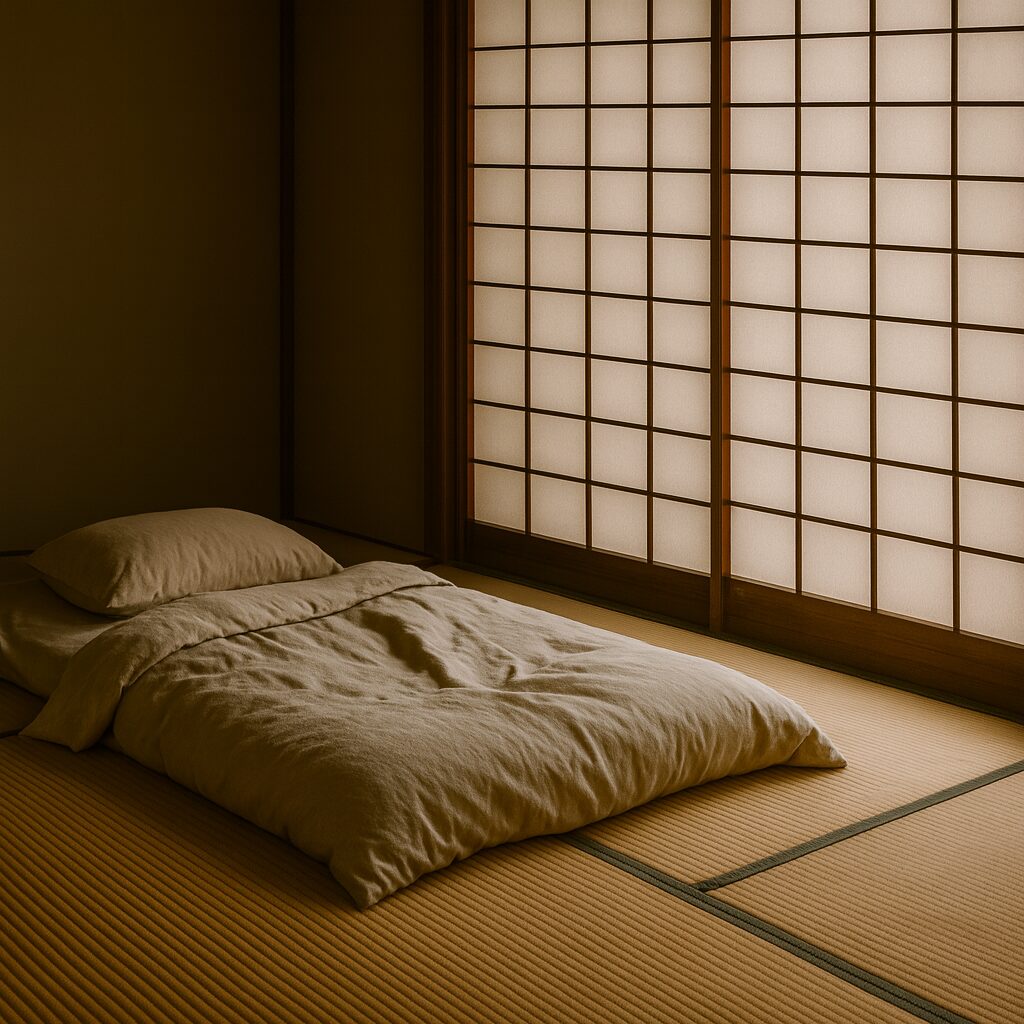In the morning, light does not rush.
It rests for a moment on the paper,
then softens—
passing through the shoji,
as if silence itself had a form.
Kokoro is present where brightness pauses,
not outside, not inside,
but in the thin distance
that joins the two.
In traditional Japanese houses, shoji (障子) are sliding panels made of a wooden lattice covered with translucent paper.
Often called shoji screens in English,
they do not block the outside world completely,
but allow light and shadow to breathe together.
Unlike glass, which separates sharply,
shoji soften what passes through—
sunlight, wind, even the faint outline of a presence.
For centuries, people have lived with this gentle boundary,
finding quiet in what is half-revealed,
half-concealed.
Waking to Shoji
I remember waking to the shoji,
still lying in my futon as the day began.
The garden was awake outside,
but inside, the first light was already passing through.
Passing softly through the shoji,
it spread not in sharp beams,
but as a quiet field
that touched the tatami
and held the room in stillness.
I felt a pause within it,
a hesitation that seemed to belong to the paper itself—
as if the shoji had asked the light
to bow before entering.
What Arrives Softened
Through the shoji,
voices were never sharp.
Even the sound of someone passing in the hallway
arrived with a veil.
Sometimes the shadow of a pine branch
trembled faintly across the paper,
and the breeze that moved it
seemed to pause before reaching me.
What was hidden was not absent.
It was simply softened—
a reminder that presence does not always need to show itself.
Kokoro was present there,
in what could be felt
but not fully grasped.
When the Paper Changes Tone
At dusk, the shoji changed its expression,
holding the afterglow of the day
in a warmer tone of paper.
I watched the panels turn from pale to amber,
and the silence grew heavier—
not empty,
but filled with what light had left behind.
It felt as if Kokoro remained in stillness,
held within the quiet surface
that asked for no more.
A Threshold Held Quiet
The shoji does not insist.
It neither hides nor exposes.
It simply lets the world arrive more slowly,
as though silence were needed
before one could see.
This is where Kokoro is found—
in the softened threshold,
where light becomes stillness
before becoming form.
Featured image: The image was created by AI (ChatGPT)



Comments